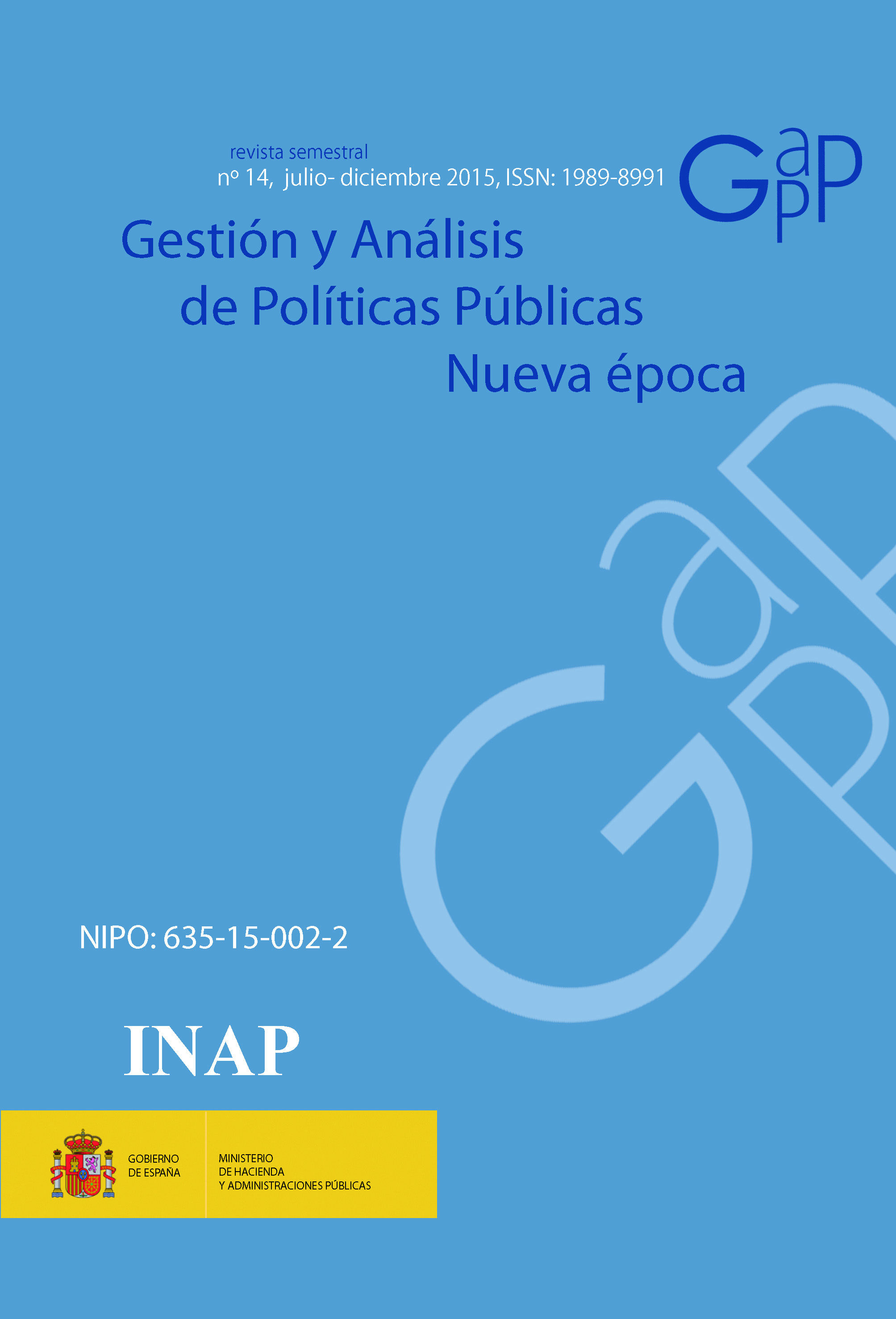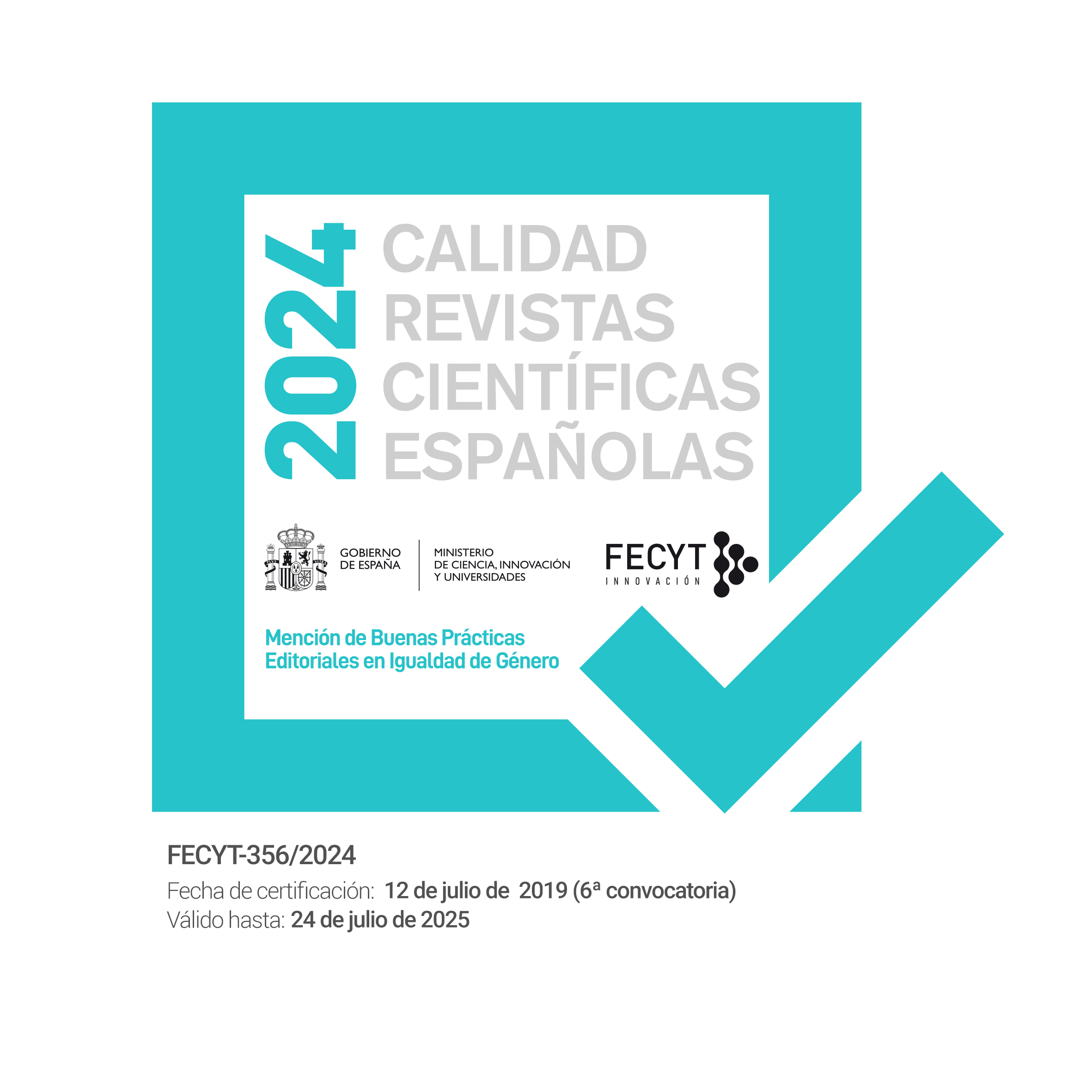Social economy and social enterprise. Conceptual and legal framework analysis in Spain
DOI:
https://doi.org/10.24965/gapp.v0i14.10291Keywords:
Social Economy, Social Enterprise, Social InnovationAbstract
Social enterprises have had an important development in the production of goods and services that complement the state and the market in meeting the needs of the population in sensitive areas such as health, education, food production, support for the elderly etc. Our research aims to model the business patterns of social enterprises and to identify key variables that make social innovation possible, in an attempt to understand new governance mechanisms in the production of public goods and services.Downloads
References
Agafonow, A., 2014. “Value Creation, Value Capture, and Value Devolution: Where Do Social Enterprises Stand?” Administration & Society, pp.1–23. DOI: 10.1177/0095399714555756.
Arenilla, M. y García-Vegas, R. 2013. “Innovación social. La integración social en la Administración Pública”, Netbiblo, La Coruña.
Argudo Périz, J. L. 2002. “El Tercer Sector y Economía Social, Marco Teórico y Situación Actual”. Acciones e Investigaciones Sociales, pp. 239-263.
Austin, J., Stevenson, H. & Wei-Skillern, J., 2006. “Social and Commercial Entrepreneurship: Same, Different, or Both?” Entrepreneurship Theory and Practice, 30(1), pp.1–22. DOI: 10.1111/j.1540-6520.2006.00107.x.
Bacq, S. & Janssen, F., 2011. “The multiple faces of social entrepreneurship: A review of definitional issues based on geographical and thematic criteria”. Entrepreneurship & Regional Development, 23(5-6), pp.373–403. DOI: 10.1080/08985626.2011.577242
Baldridge, J. V., & Burnham, R. A. (1975). “Organizational Innovation: Individual, Organizational, and Environmental Impacts”. Administrative Science Quarterly, 20 (2), 165-176. DOI: 10.2307/2391692.
Borzaga, C. & Defourny, J., 2004. The emergence of social enterprise, New York: Routledge. DOI: 10.1111/j.1467-8292.1991.tb01366.x.
Borzaga, C. & Galera, G.G., 2012. “The concept and practice of social enterprise: Lessons from the Italian experience”. International Review of Social Research, 2(2), pp.95–112. DOI: 10.1515/irsr-2012-0019.
Borzaga, C. & Tortia, E., 2007. “Social economy organizations in the theory of the firm”. In A. Noya & E. Clarence, eds. The social economy: Building inclusive economies. Paris: OECD Publishing, pp. 23–60. DOI: 10.1787/9789264039889-en.
Buckland H. & Murillo, D. 2013. Antena de Innovación Social. Vías hacia el cambio Sistémico. Ejemplos y variables para la innovación social. Barcelona: Esade, Universidad Ramón Llull e Instituto de Innovación Social.
Campi, S., Defourny, J. & Grégiore, O., 2006. “Work integration social enterprises”. In M. Nyssens, ed. Social enterprise: At the crossroads of market, public policies and civil society. London: Routledge, pp. 29–49.
Chaves, R. 2007. “La Economía Social en las Políticas Públicas en España”. CIRIEC España. Disponible en http://www.empleo.gob.es/es/sec_trabajo/autonomos/economia-soc/NoticiasDoc/NoticiasPortada/ES_politicas_publicas_2007.pdf.
CIRIEC-International. 2011. “Social and Solidarity Economy: Our Common Road towards Decent Work”. Working Paper In support of the Second edition of the Social and Solidarity Economy Academy, 24-28 October 2011, Montreal, Canada. Disponible en: http://www.ilo.org/wcmsp5/groups/public/---ed_emp/---emp_ent/---coop/documents/instructionalmaterial/wcms_166301.pdf.
Comité Económico y Social Europeo. 2012. Dictamen del Comité Económico y Social Europeo sobre “Espíritu empresarial social y las empresas sociales” (Dictamen exploratorio)(2012/C 24/01).
Dacin, P. A., Dacin, M.T. & Matear, M., 2010. “Social Entrepreneurship: Why We Don’t Need a New Theory and How We Move Forward From Here”. The Academy of Management Perspectives, 24(3), pp.37–57.
Defourny, J. & Nyssens, M., 2008. “Social enterprise in Europe: recent trends and developments”. Social Enterprise Journal, 4(3), pp.202–228. DOI: 10.1108/17508610810922703.
European Commission, 2013. “Social economy and social entrepreneurship”. Social Europe Guide Volume 4, Luxembourg: Publications Office of the European Union. Available at: http://ec.europa.eu/social/main.jsp?catId=738&langId=en&pubId=7523.
Hansmann, H. B., 2003. “The Role of Trust in Nonprofit Enterprise”. In H. Anheier & A. Ben-Ner, eds. The Study of the Nonprofit Enterprise. Theories and Approaches. New York: Kluwer Academic/Plenum Publishers, pp. 115–122. DOI: 10.1007/978-1-4615-0131-2_6.
Hoogendoorn, B., Pennings, E. & Thurik, R., 2010. “What do we know about social entrepreneurship? An analysis of empirical research”. International Review of Entrepreneurship, 8(2), pp.1–42.
Hwang, H.; Powell, W. W. 2009. “The Rationalization of Charity: The Influences os Professionalism in the Nonprofit Sector”. Administrative Science Quartely. 54: 268-298. DOI: 10.2189/asqu.2009.54.2.268.
Kickul, J. et al., 2012. Social Business Education: An Interview With Nobel Laureate Muhammad Yunus. Academy of Management Learning & Education, 11(3), pp.453–462. DOI: 10.5465/amle.2011.0500.
Laville, J.L.; Levesque, B; Mendell, M. 2009. “The Social Economy: Diverse Approaches and Practices in Europe and Canada”. En Social Economy: Building Inclusive Economies. OECD. Disponible en http://kwasnicki.prawo.uni.wroc.pl/pliki/The%20Social%20Economy%20Building%20Inclusive%20Economies.pdf#page=157.
Martin, R. & Osberg, S., 2007. “Social entrepreneurship: The case for definition”. Stanford Social Innovation Review, (Spring), pp. 29–39.
Miller, T., Grimes, M., McMullen, F., & Vogus, T. 2012. “Venturing for others with heart and head: How compassion encourages social entrepreneurship”. Academy of Management Review, 37(4), 616–640. DOI: 10.5465/amr.2010.0456.
Monzón, J. L. 2011. Las Grandes Cifras de la Economía Social en España. Ámbito, Entidades y Cifras Clave. Año 2008. Ciriec España y Observatorio Español de la Economía Social. Disponible en: http://www.divinapastora.com/fundacion/media/documentos/ciriecgrandesci.pdf.
Monzón, J. L.; CHAVES, R. 2012. La Economía Social en la Unión Europea. Informe elaborado para el Comité Económico y Social Europeo por el Centro Internacional de Investigación e Información sobre la Economía Pública, Social y Cooperativa (CIRIEC). Disponible en: http://www.eesc.europa.eu/resources/docs/qe-30-12-790-es-c.pdf.
OECD, 2010. SMEs, Entrepreneurship and Innovation, OECD Studies on SMEs and Entrepreneurship, Paris: OECD Publishing.
Ortmann, A. & Brhlikova, P., 2010. “Theories of Nonprofit Organization, Economic”. In H. K. Anheier & S. Toepler, eds. International Encyclopedia of Civil Society. New York, NY: Springer US, pp. 1521–1527. DOI: 10.1007/978-0-387-93996-4_136.
Peredo, A.M. & McLean, M., 2006. “Social entrepreneurship: A critical review of the concept”. Journal of World Business, 41(1), pp.56–65. DOI:10.1016/j.jwb.2005.10.007.
Sajardo Moreno, A; Chaves Ávila, R. 1999. “El tercer sector como realidad institucional. Delimitación y cuantificación en España y otros países desarrollados”. Ekonomiaz: Revista vasca de economía; 39, pp 82-107.
Santos, F.M., 2012. “A Positive Theory of Social Entrepreneurship”. Journal of Business Ethics, 111(3), pp.335–351. DOI: 10.1007/s10551-012-1413-4.
Seelos, C. & Mair, J., 2004. Entrepreneurs in service of the poor: Models for business contributions to sustainable development, Navarra.
Short, J.C., Moss, T.W. & Lumpkin, G.T., 2009. “Research in social entrepreneurship: past contributions and future opportunities”. Strategic Entrepreneurship Journal, 3(2), pp.161–194. DOI: 10.1002/sej.69.
Social Enterprise UK, 2012. What makes a social enterprise a social enterprise? Available at: http://www.socialenterprise.org.uk/uploads/files/2012/04/what_makes_a_social_enterprise_a_social_enterprise_april_2012.pdf [Accessed February 16, 2015].
Steinberg, R., 2006. “Economic Theories of Nonprofit Organizations”. In W. W. Powel & R. Steinberg, eds. The Nonprofit Sector. A Research Handbook. New Haven & London: Yale University Press, pp. 117–139.
Valentinov, V., 2008. “The Economics of the Non-Distribution Constraint: A Critical Reappraisal”. Annals of Public and Cooperative Economics, 79(1), pp.35–52. DOI: 10.1111/j.1467-8292.2007.00351.x.
Yunus, M. & Weber, K., 2010. Building Social Business. The New Kind of Capitalism that Serves Humanity’s Most Pressing Needs, New York: Public Affairs.
Yunus, M., Moingeon, B. & Lehmann-Ortega, L., 2010. “Building Social Business Models: Lessons from the Grameen Experience”. Long Range Planning, 43(2-3), pp.308–325.
Zahra, S.A. et al., 2009. “A typology of social entrepreneurs: Motives, search processes and ethical challenges”. Journal of Business Venturing, 24(5), pp.519–532.
LEY 44/2007, de 13 de diciembre, para la regulación del régimen de las empresas de inserción.
LEY 5/2011, de 29 de marzo, de Economía Social.
REAL DECRETO 227311985, de 4 de diciembre, por el que se aprueba el Reglamento de los Centros especiales de Empleo definidos en el artículo 42 de la Ley 1311982, de 7 de abriL de integración Social del Minusválido.












